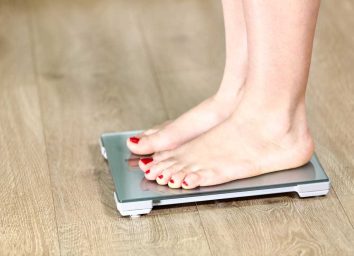35 Tips for Being Healthy at Restaurants
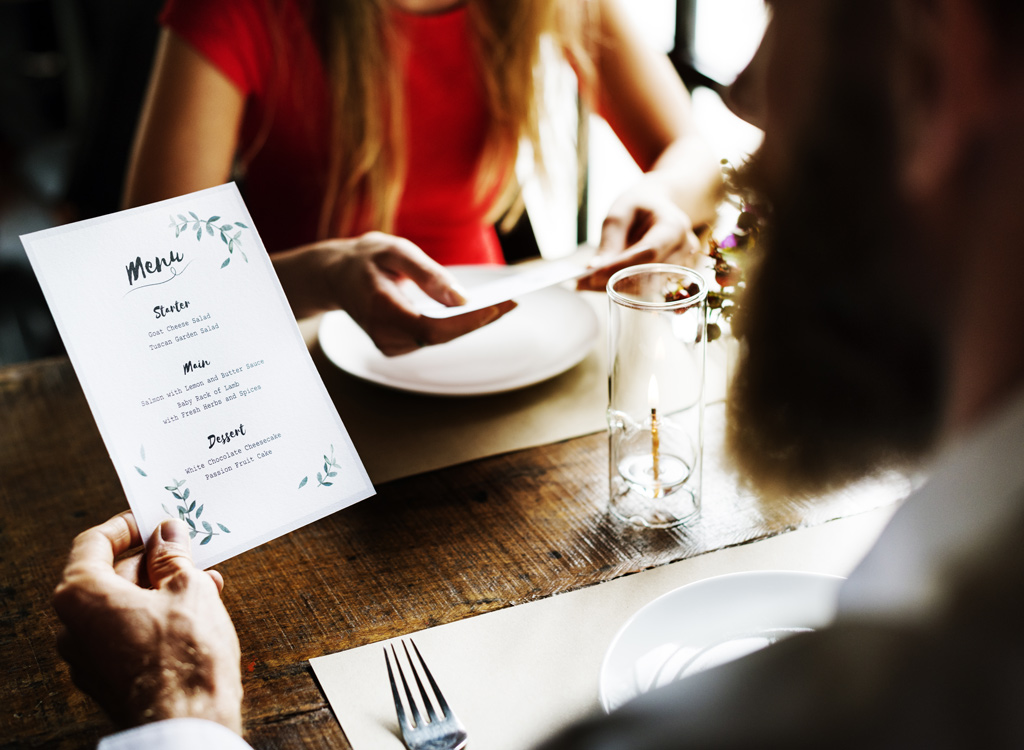
Restaurants know the key to your heart—and your wallet—is through your stomach. And while yes, the food and drinks are delicious, they can set you way over in the amount of calories and fat you need for a day. A 2013 study by the University of Toronto found that the average restaurant meal clocks in at 1,128. And that’s not even counting the drinks! “When I go out, I usually order a vodka and club soda,” says Mark Langowski, celebrity trainer and author of Eat This, Not That! For Abs. That’s because Mark knows what a death trap so many of the other options are and how to eat healthy at restaurants. Between the seemingly-innocent starters to the sinful, oversized entreés, eating out really can explode into a nightmare for anyone trying to keep their waistline in check.
The good news is that you can still eat out without throwing a calorie bomb into your diet plan. You don’t have to be perfect—you just need to do a little damage control. All you need is a good game plan, which you’ll find below—and be sure to avoid The #1 Worst Menu Option at 40 Popular Restaurants once you get there!
First, Pick the Right Restaurant

Choosing one restaurant over another can make a bigger difference than you may suspect. Heed the advice below so you don’t set yourself up for failure before you even sit down.
Check The Menu Online

Most—if not all—popular restaurants now post their menus online. Take a quick peek at what they have to offer before you decide which restaurant is right for tonight’s meal. This has two benefits: You can see if they have any healthy options and then pre-plan your meal to avoid temptation. And if they have a lot of fattening, fried foods? Just move on to the next restaurant. But don’t just assume a delicious sounding salad is a sure win; even those can be loaded with more sugar than you’d ever expect. The 23 Restaurant Foods With Crazy-High Amounts of Sugar will blow your mind…
Go to Restaurants With a Low-Cal Menu
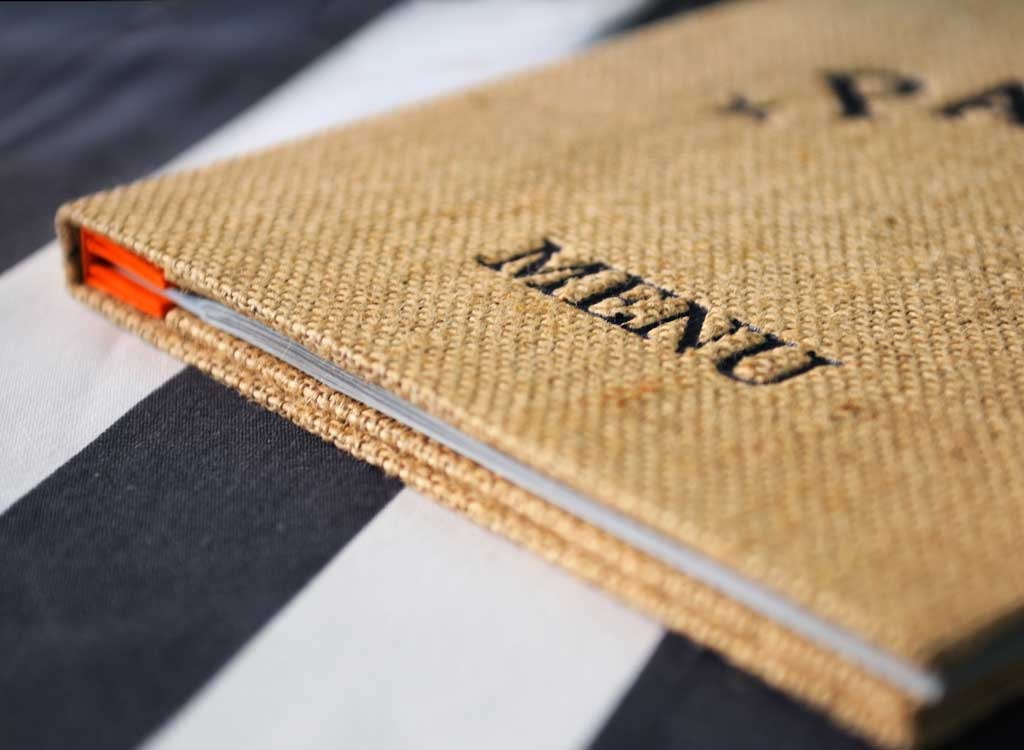
Restaurants know they have to change with the times, and these times call for healthy options alongside those creamy and fattening entrées. National chain restaurants now like Applebee’s now offer special lighter-fare menus (600 calories or less) for their more health-conscious customers. See our list of 25 Restaurant Meals Under 500 Calories for more specific ideas.
Opt for Upscale

If money’s not a concern, opt to go a bit fancier than your neighborhood grill and patronize one of the higher-end restaurants in your area. The reason: upscale restaurants tend to offer much smaller portions than chain restaurants, allowing you to indulge in some of the fancier fare in appropriate portions.
Make Reservations

Being around delicious food is agonizing when you’re waiting for a table at a restaurant. Those tummy grumbles you hear tend to take over, making you more likely to fill up on a ton of food once you finally sit down to dine. Eliminate those temptations by making reservations ahead of time so you’re ensured a table when you arrive. That way you can stick to your plan without your desperate empty stomach influencing your decisions. Just don’t order these 25 Foods That Make You Hungrier!
Ask for a Table Far From the Kitchen
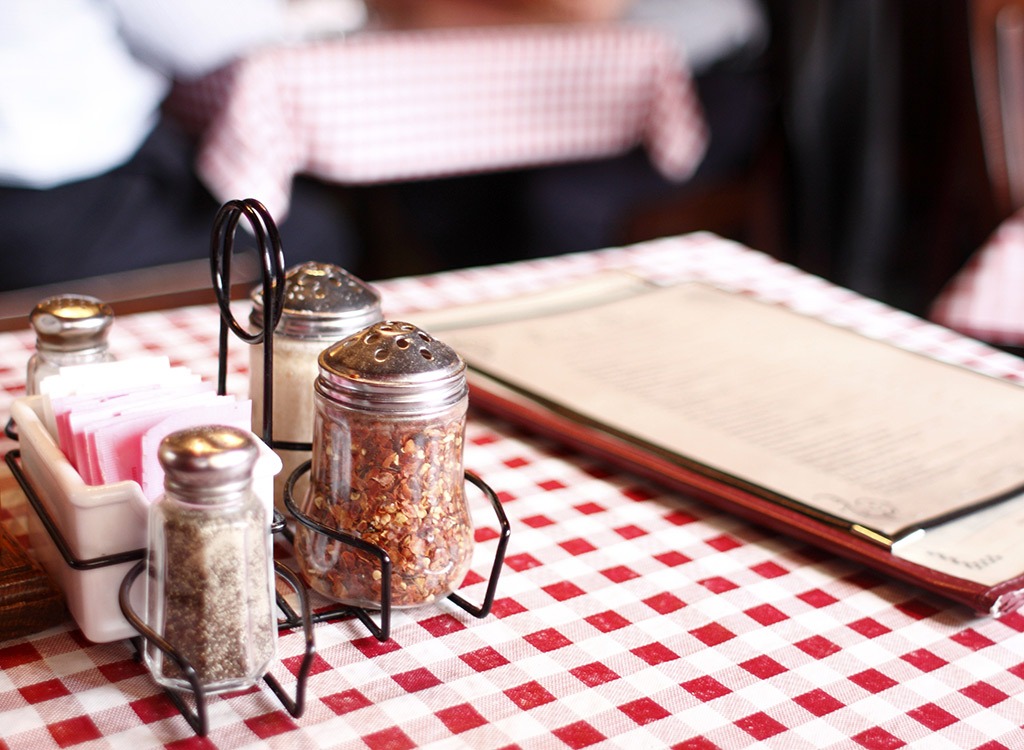
It’s one thing to read about the calorie-laden entrees on the menu, but it’s another to see them in all their plated glory. Sitting at a table by the kitchen gives you the perfect view of every dish as they’re served to the table. This is a temptation that you just don’t want, especially if you’re already really hungry.
Pay Attention to the Music

Take a listen to the music being piped through the restaurants. Eateries with loud, boisterous music—think rock, pop, and heavy metal—create a hectic atmosphere that makes people want to eat quickly. And what happens when you eat quickly? You eat more and suck in air that causes bloating. (Yes, this is one of the 35 Things That Make You Bloat!) Instead, opt for establishments with softer sounds like jazz. A study by researchers at Cornell University found that people who dined in restaurants with lighter music lingered at the table longer, but they actually ate less food.
Look for Light Colors

The same goes for color. Restaurants with bold, bright colors—think reds and oranges—are stimulating, so you’re more likely to order more. As for the opposite? Softer colors like blues, peaches, grays and pinks encourage a more relaxed, eat-slowly atmosphere.
Watch Yourself in the Mirror

Believe it or not, eating in restaurants that are lined with mirrors will actually make you want to eat less. Researchers at the University of Central Florida recently observed 185 students eating either fruit salad or a piece of chocolate cake. Some were placed in a room with a mirror; some ate in a mirrorless room. The subjects who ate the chocolate cake in the mirror-lined room actually said the cake didn’t taste very good while those in the non-mirrored room didn’t have any complaints. The reason? Researchers believe looking in a mirror makes people judge themselves more harshly because they’re able to watch themselves eat. Go ahead a hang a mirror in your dining room; it’s incredible findings like these that show why there are 20 Reasons It’s Easier Than Ever to Lose Weight!
Tips for Ordering
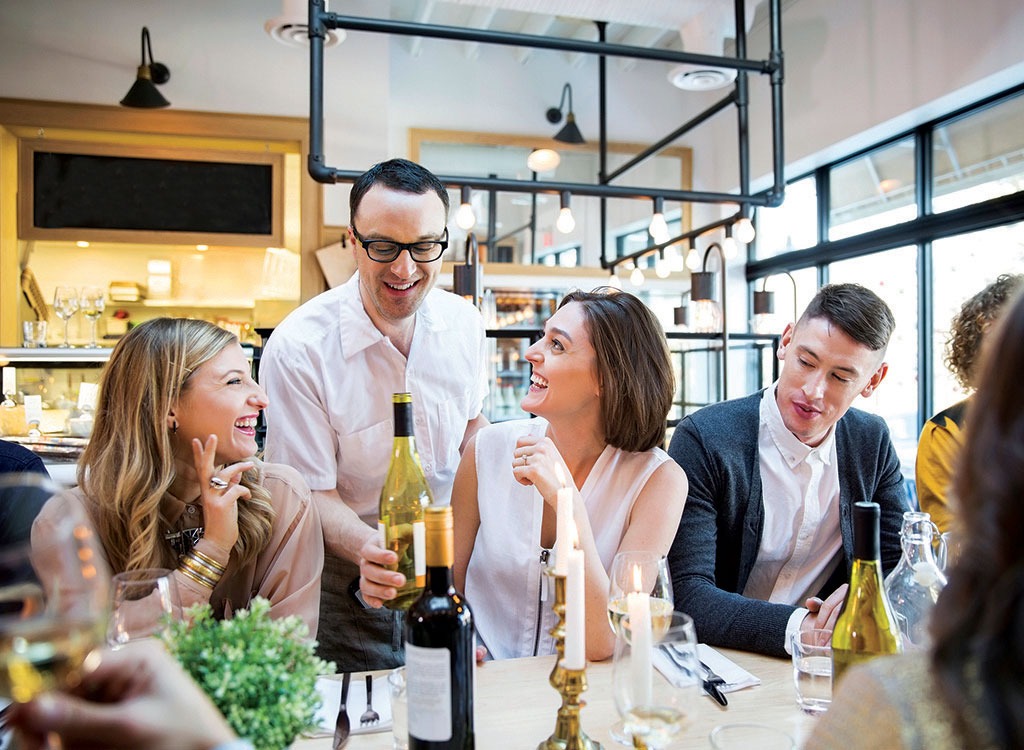
Now that you’re seated and ready to enjoy yourself, conquer the next step toward a positive, guilt-free dining experience!
Order Salad First
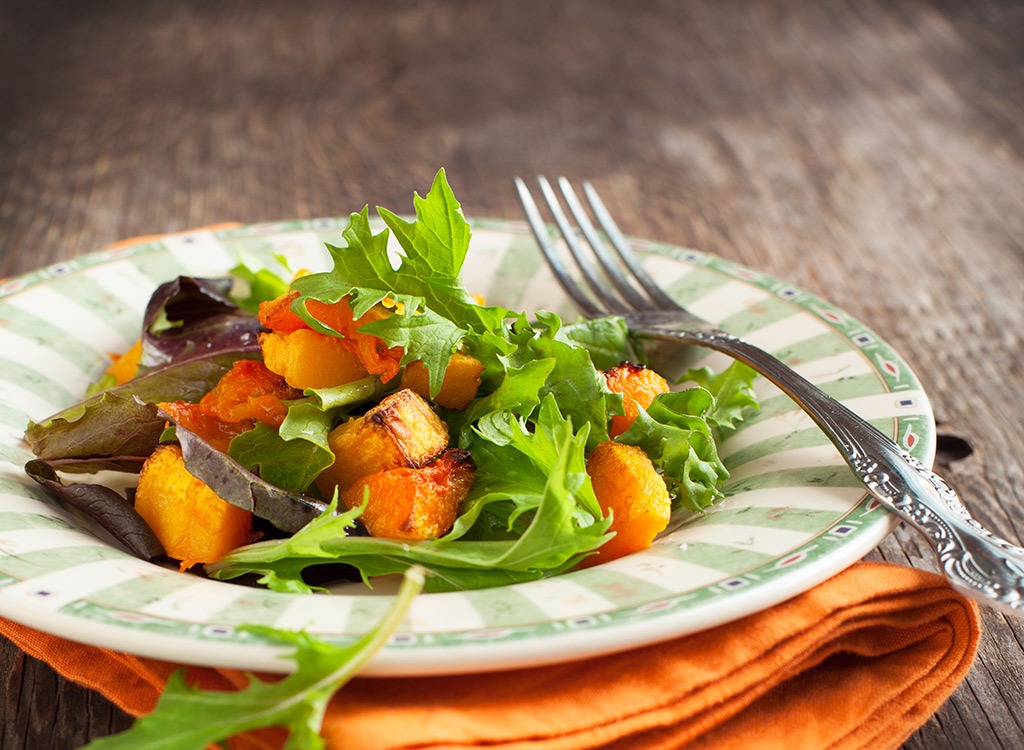
Loading up on healthy fiber at the beginning of a meal sets a good tone for the rest of the experience. A study by researchers at the University of Pennsylvania found that volunteers who ate a large vegetable salad before their main dish ate fewer calories than those who didn’t. Just make sure you keep it simple by foregoing creamy (read: fattening) dressings for simple oil and vinegar. And skip the cheese and croutons, too. Not in the mood for salad? Pick a meal that’s very veggie-heavy; the “half-plate rule”—filling half your plate with veggies—is one of the 10 Genius Tips to Lose 10 Pounds in 2016!
Look for Loaded Words on the Menu
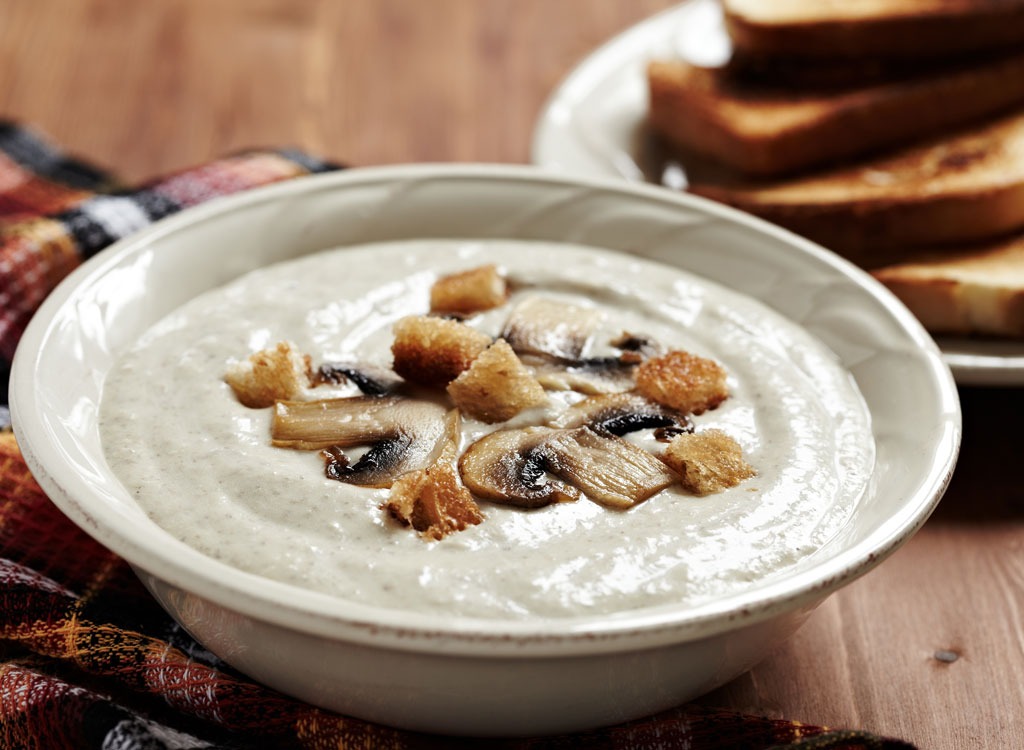
It would be so much easier if restaurants just came out and said that entrees are full of calories, but few do. Instead, they cloak with fancy-sounding words that hide their true meaning. But, what do you look for? Anything that’s described as creamy, buttery, breaded, stuffed or smothered is likely loaded with fat and calories. Fancy-sounding terms like au gratin, parmesan, cheese-filed scalloped or sauteed is a giveaway that there are plenty of calories stuffed inside the meal.
Go for a Broth-Based Soup
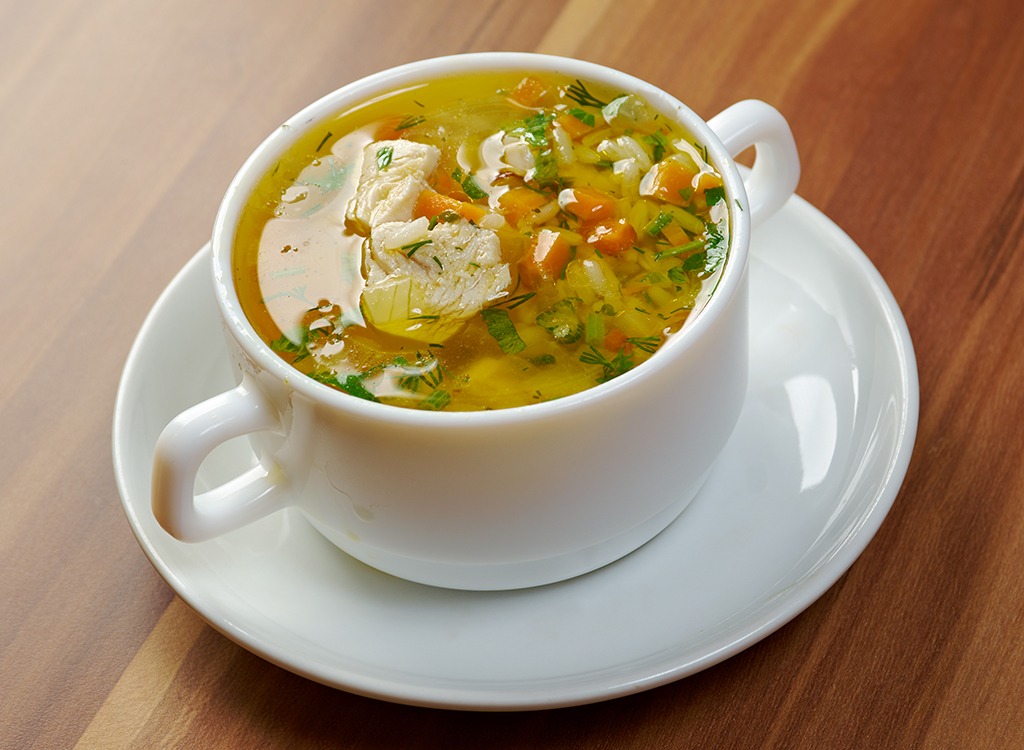
Broth-based soups–think anything made with chicken or beef stock–is another good way to fill up your stomach before the main meal. A cup of soup loaded with veggies and some lean meat like chicken is both healthy and feeling. Better yet: Order soup and salad for your main meal and you’ll have a filling meal that’s low in calories. To make one at home, check out these 20+ Best Broth-Based Soups for Weight Loss!
Beware of Gluten-Free Options
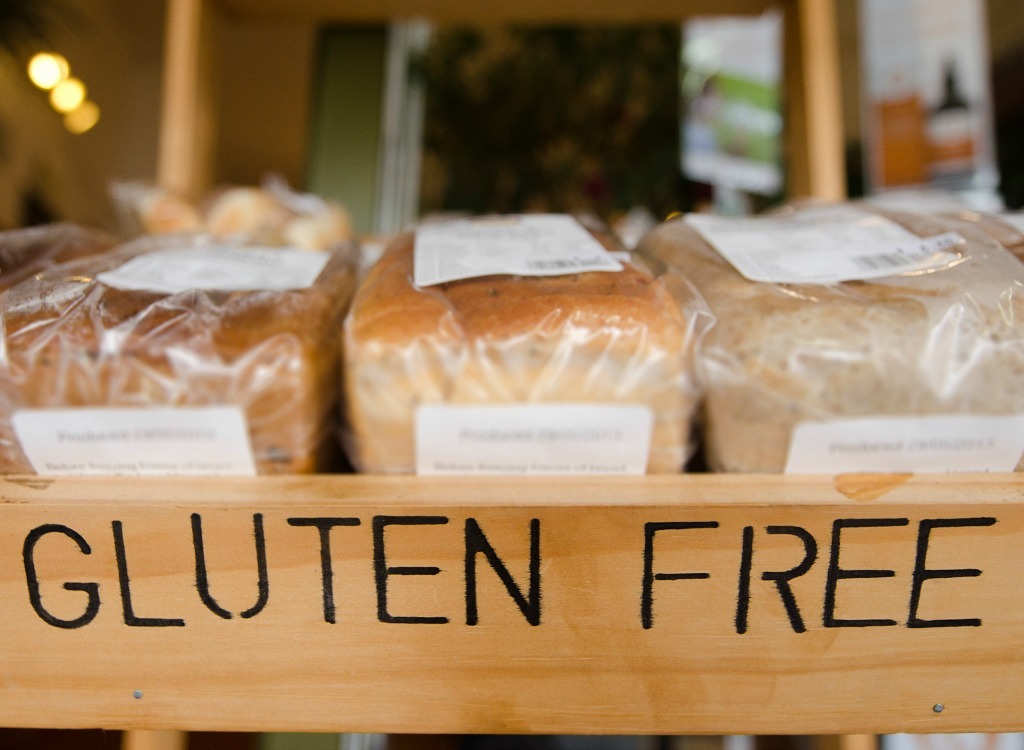
The term “gluten-free” has a health halo around it, meaning that many people assume that foods are healthy if they’re labeled as gluten-free. The truth? Gluten-free just means that there’s no gluten in the food, not that it’s low calorie or low fat. Sometimes the gluten-free options are even more caloric because the recipe requires extra ingredients in order to make up for the lack of gluten.
Double Up on Appetizers Instead of a Main
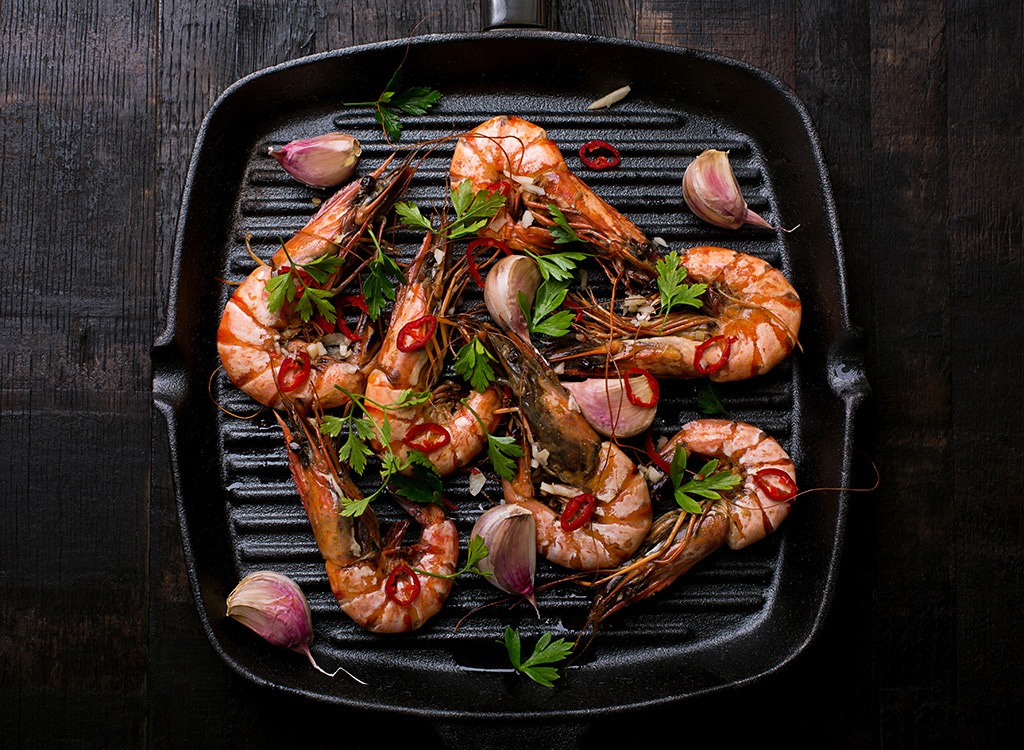
Many times restaurants offer seafood- or vegetable-based options on the appetizer menu that can serve as a healthy option. Order a portion (or two) and eat it as your main meal. Just make sure you stay away from the breaded or sauced versions of the appetizers to keep it from becoming a calorie bomb. Besides, those fried sticks of something cheesy or decadent tartare might be one of your 23 Foods That Ruin Date Night!
Ask the Server for Help

Your server is there to help! Ask her to explain everything about the options you’re mulling over on the menu. She can explain what any unfamiliar words mean—not to mention, she’s the one who can recommend how to make something healthier by adding or extracting some ingredients or options. Pro tip: Ask the server what she’d order if she wanted the healthiest thing on the menu. She might suggest something you didn’t consider before.
Ask for Triple the Vegetables
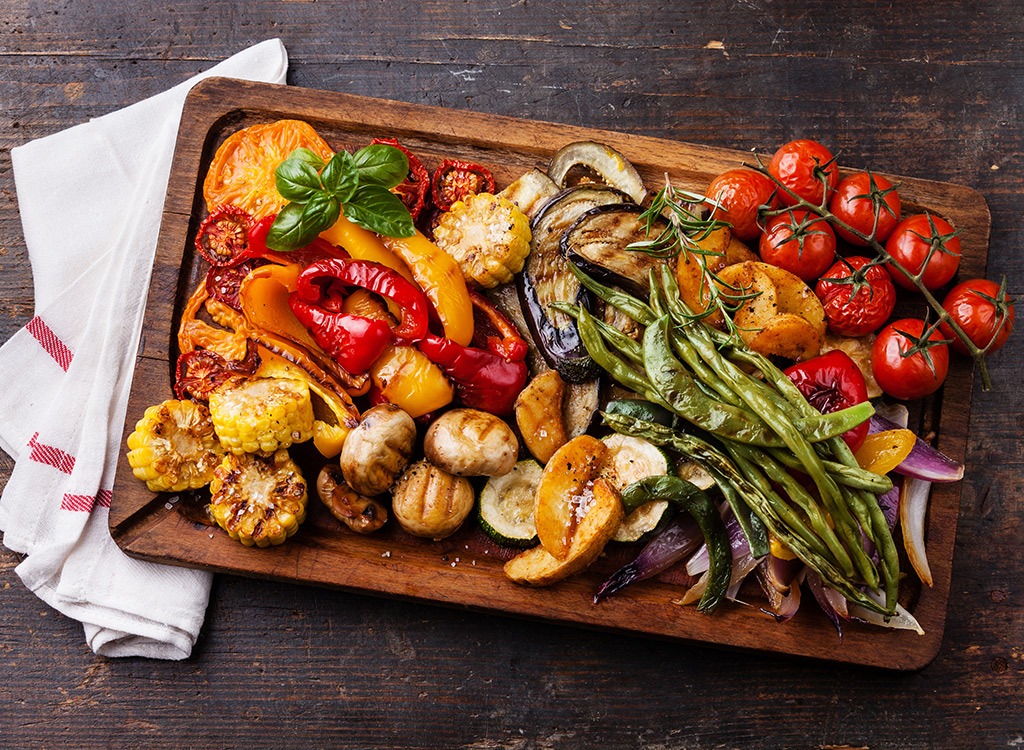
Vegetables are an afterthought on many restaurant entrees, so ask your server to add extra portions of vegetables—either in place of less healthy sides or in addition. You might get a small upcharge, but many times they’ll be happy to swap it out without it costing more.
Know the Difference Between Cuts
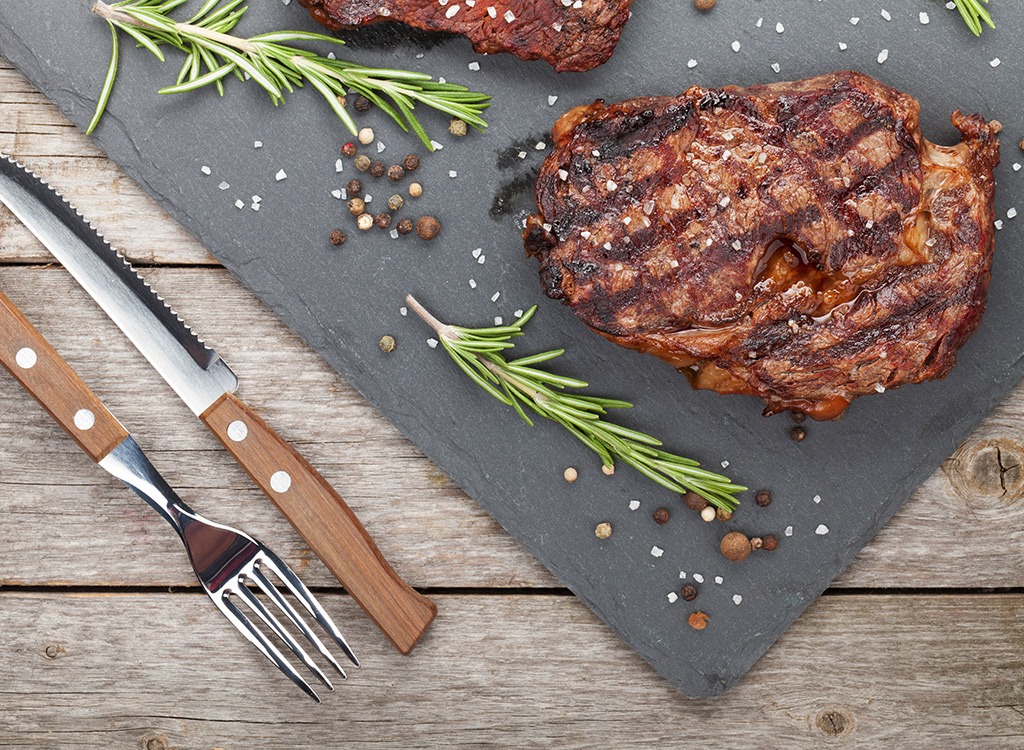
All cuts of meat aren’t the same. Skinless chicken breast is a better option than the more fatty chicken thighs or legs. As for beef, look for names like top sirloin, tip side steak, bottom round—and stay away from sinful slabs like prime rib.
Request Butter and Sauces on the Side
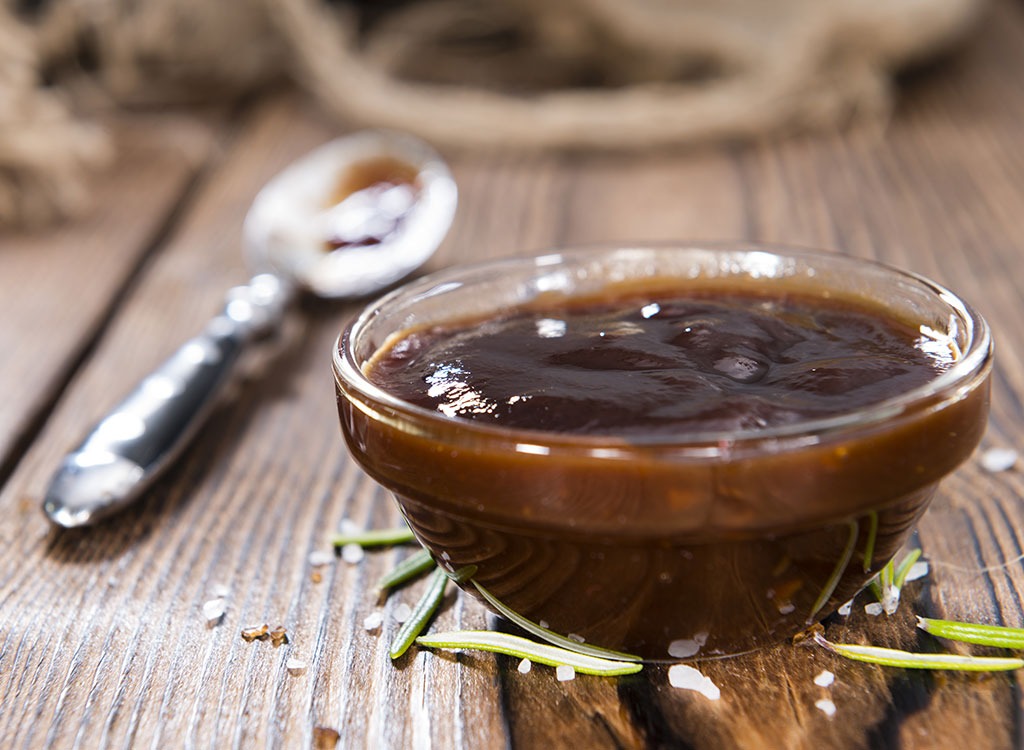
You know to look for certain words on the menu to clue you in to added fat and calories in entrees, but restaurants don’t always indicate when they use extra butter or sauces to vegetables and meats. Avoid those unexpected extra calories by requesting that they cook without all butter and dressings. You can opt for it on the side if you want.
Say ‘No’ to Empty-Calorie Drinks
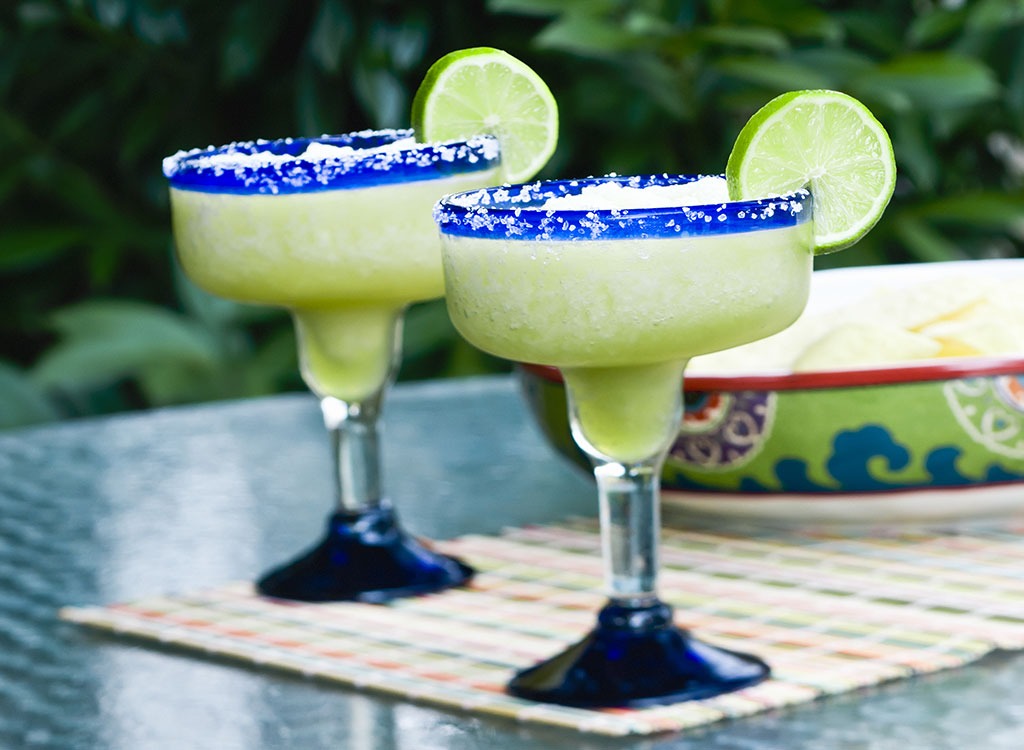
What do soda and alcoholic drinks have in common? They’re both bad for your health—and your waistline. You could always stick with water for your mealtime beverage or unsweetened iced tea if you need a little taste. But if you just have to have a little alcohol? Stay away from sugary margaritas and pina coladas because they’ll just add hundreds—or even thousands—of extra calories. Instead, get a glass of red wine (for the antioxidant benefits) or a vodka with a splash of club soda and a lime, like Mark Langowski. For more tips from him and his friends with six-pack abs, find out the 21 Things People With Six-Packs Do Every Week.
Look For Key Healthy Terms
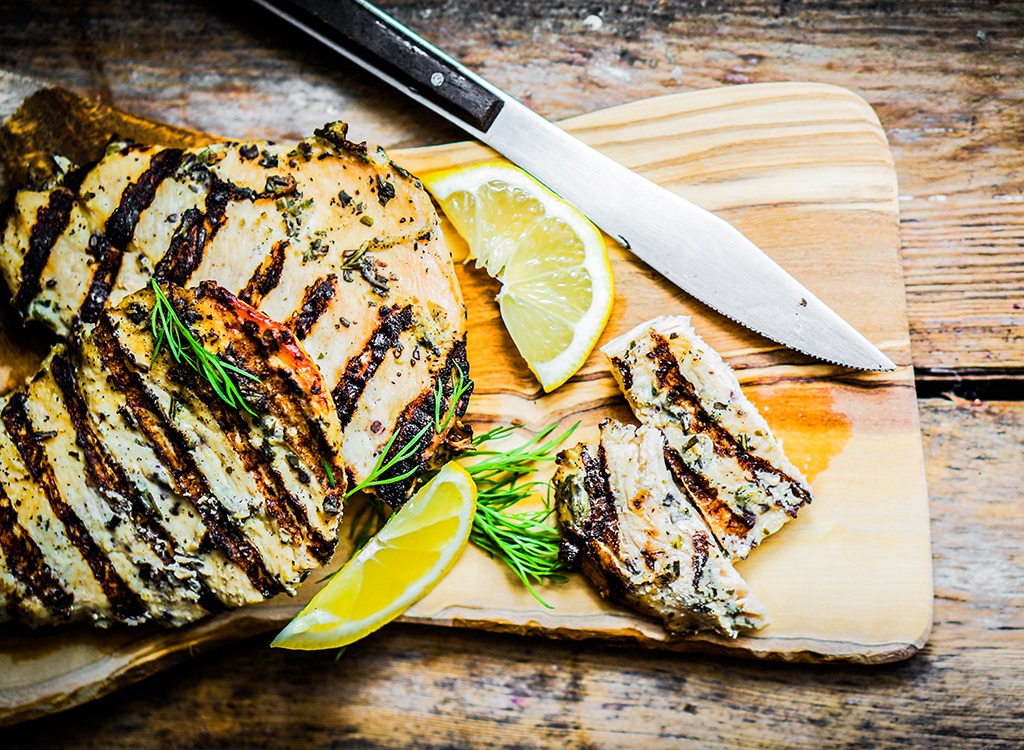
What do the words grilled, broiled and baked have it common? They’re all words that indicate that the food was cooked in the healthiest way possible. Of course, there’s always a chance the restaurant could use butter or sauces in the prep process, but you know to request that they leave it off.
Order Fish
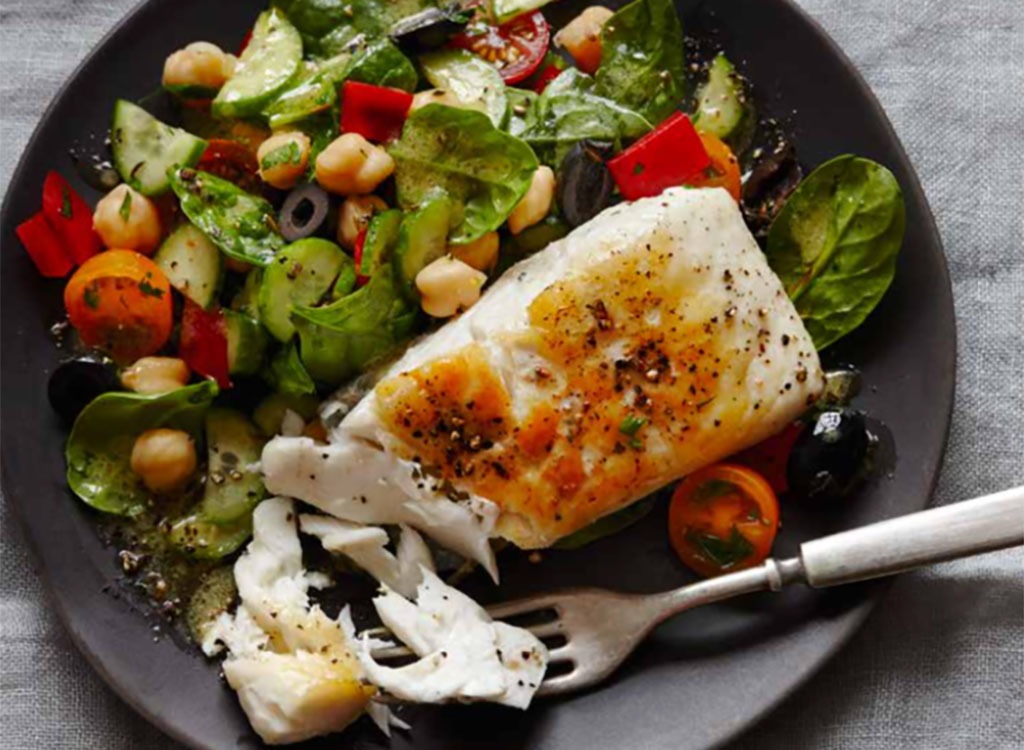
Seafood is almost always a good choice, as long as it’s not fried, sauteed, or on our “Worst” list in our exclusive report of 40+ Popular Types of Fish—Ranked for Nutrition. Ask for your seafood option to be cooked without any sauces or butter.
Ask for Fruit
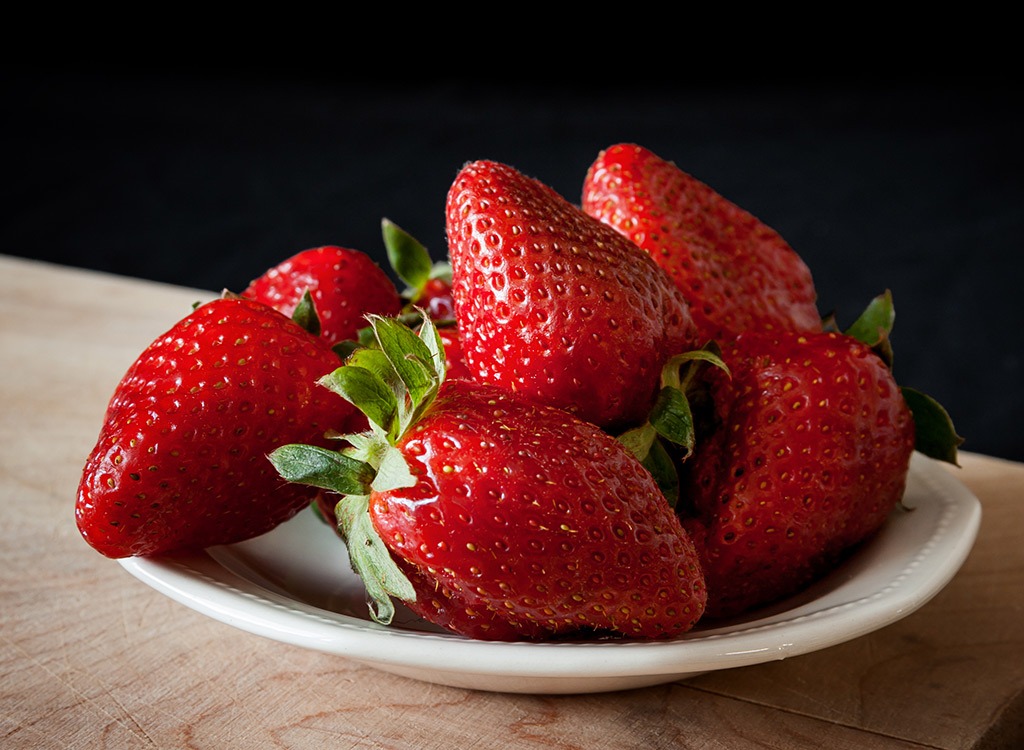
A side of fruit can add a little sweetness and zing to your meal without adding a lot of extra calories. Many restaurants offer a mixed fruit side; but if you can choose, go for superfoods like raspberries, blueberries, blackberries and strawberries; they’re chock full of antioxidants and vitamins without a lot of sugar.
Tips for Your Dining Experience

Hopefully, you are feeling good about your choices, pacing yourself, and enjoying the atmosphere. Now that your dish is sitting in front of you, follow these steps to finish strong!
Liven Up With Spices
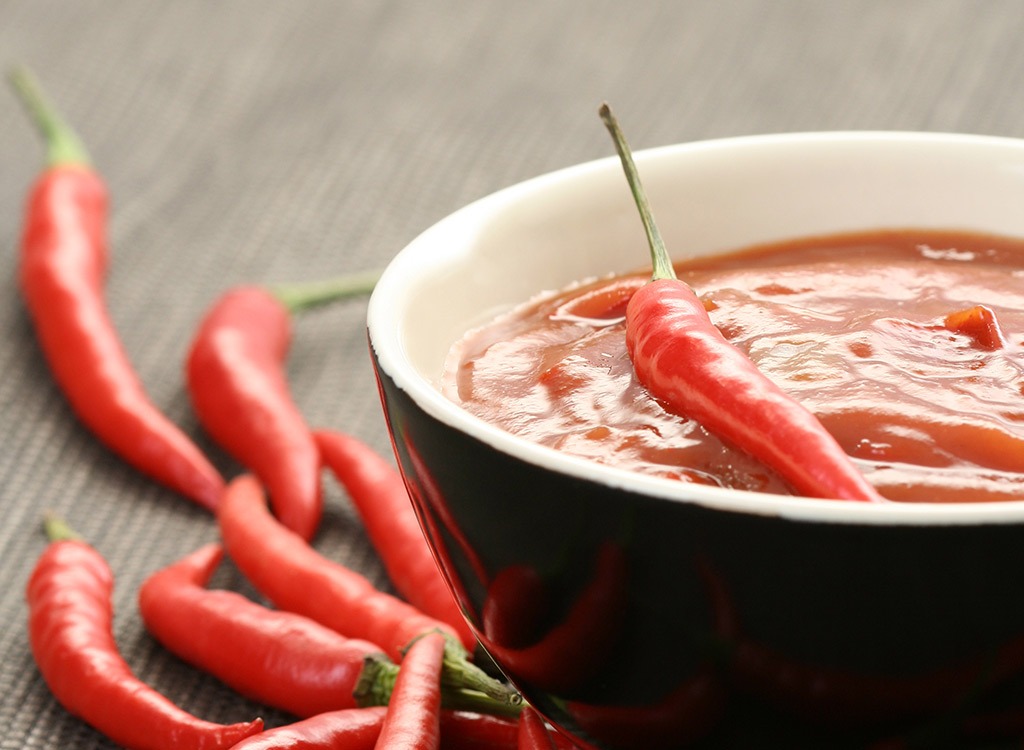
You know to ask for any sauces on the side, but eating healthy doesn’t mean giving up flavor. Pump up the taste by adding a bit of salt and pepper, or ask for their selection of spices. Paprika, garlic salt, chili powder and lemon can easily add extra zing to meats and vegetables without extra calories. Bonus: Don’t miss these 20 Spices That Fire Up Your Metabolism!
Use the ‘Fork Dip’ Method
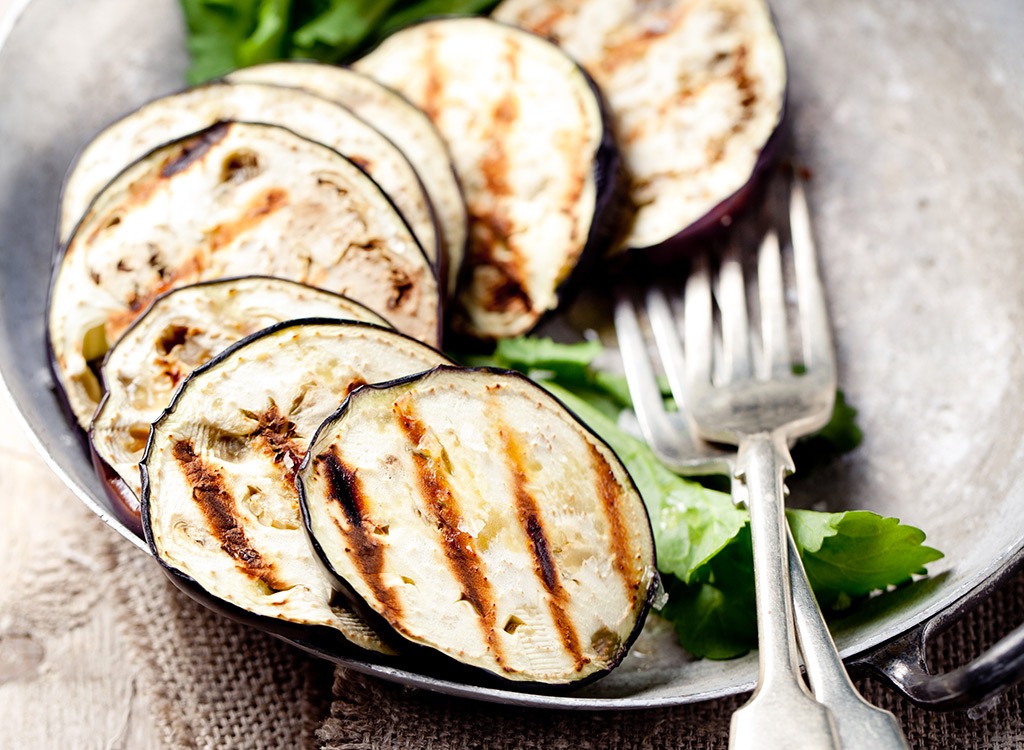
Want to indulge in some creamy dressings, but don’t want to add a ton of extra calories? Ask for it on the side and then dip your fork in it before you load it up with lettuce and crunchy veggies. That way you get a little taste of the creamy stuff you crave without going overboard.
Immediately Ask For a To-Go Box
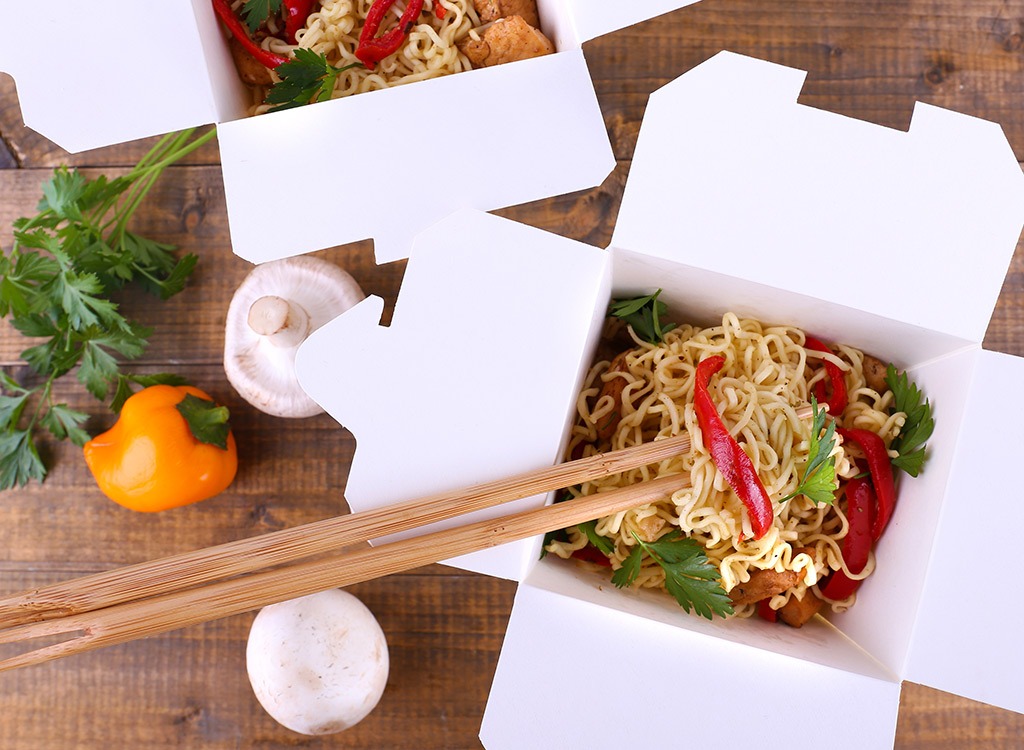
A study from the Center for Science in the Public Interest found that many restaurants serve portions that are triple (or even quadruple!) that of a recommended portion size. Avoid overeating by immediately putting half—or even 75 percent—of your entree into a to-go box to eat as leftovers at home. It’s like getting at least two meals for the price of one.
Eat the Lowest-Calorie Portion First
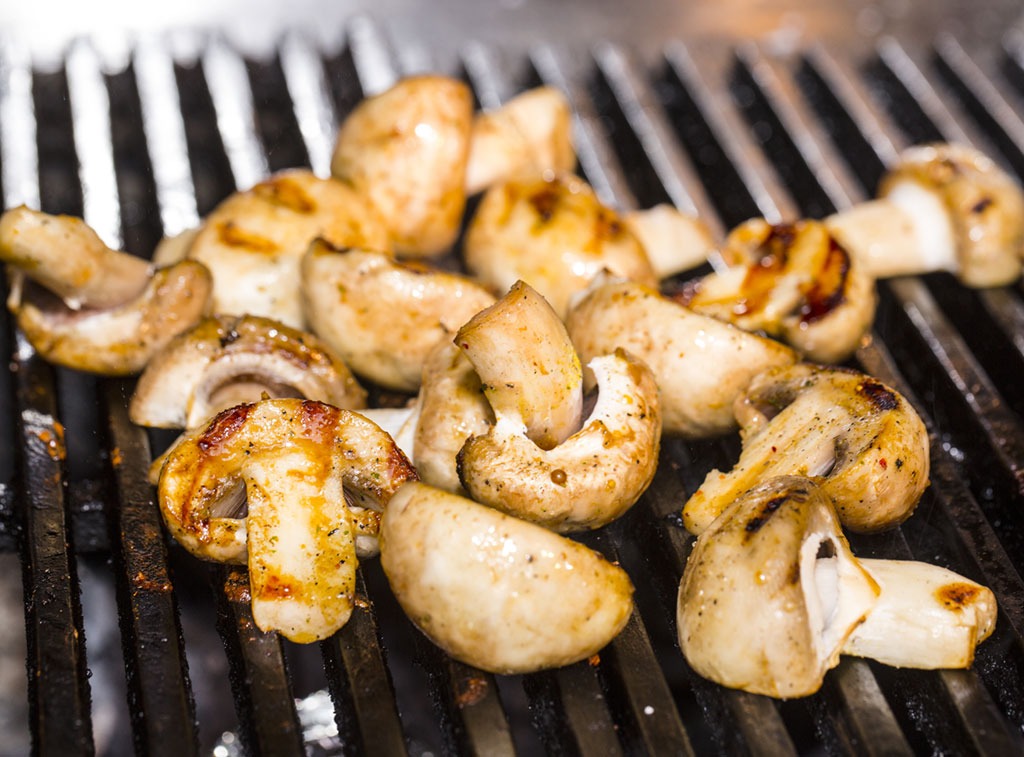
Eating your lower-calorie sides before the main part of your meal will help you fill your stomach without overdoing it. And if you do get full? Just put the rest in your to-go box for later meals. It can sound underwhelming but it’s one of the 44 Ways to Lose 4 Inches of Body Fat!
Skip the Skin
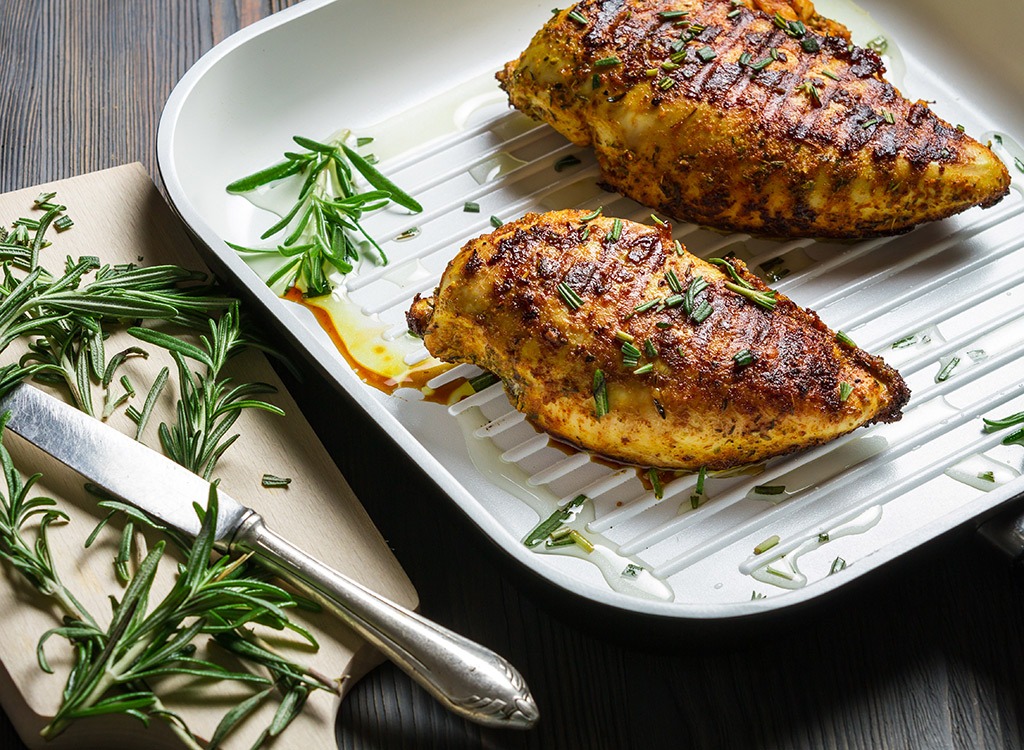
It’s normal for restaurants to cook turkey, chicken, and even duck and to leave the chicken on during the cooking process, but you should take it off before eating it. The skin is loaded with a bunch of calories and saturated fat that you don’t have room for in a healthy diet.
Say No to the Bread Basket or Chips and Salsa
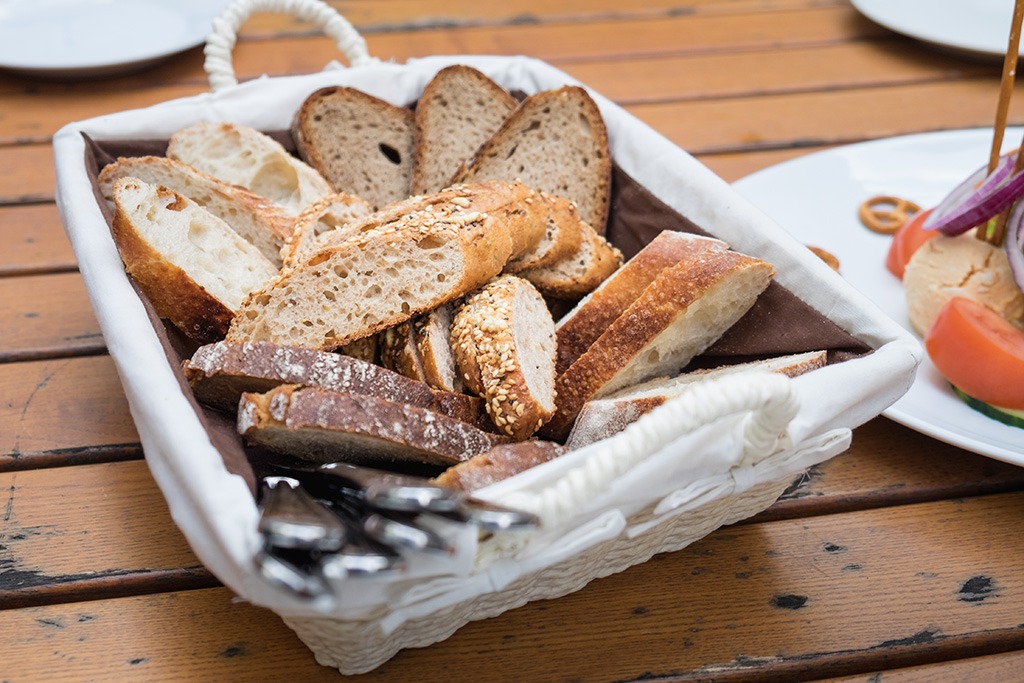
You can easily eat hundreds of extra calories before you even order your meal when you dig into the bread basket or tortilla chip bowl. Save those calories for your meal by sending back any free table service provided by the restaurant. And if you must have something to munch on immediately? Ask for a healthy snack idea, like a small plate of veggies.
Put Your Fork Down Between Bites

Eating quickly is a surefire way to overeat. Counteract that tendency by putting down your silverware between each bite to rest for a minute or so. This gives you the perfect amount of time to add to the dinner conversation and gives you the chance to gauge your hunger level before taking another bite.
Dress Up
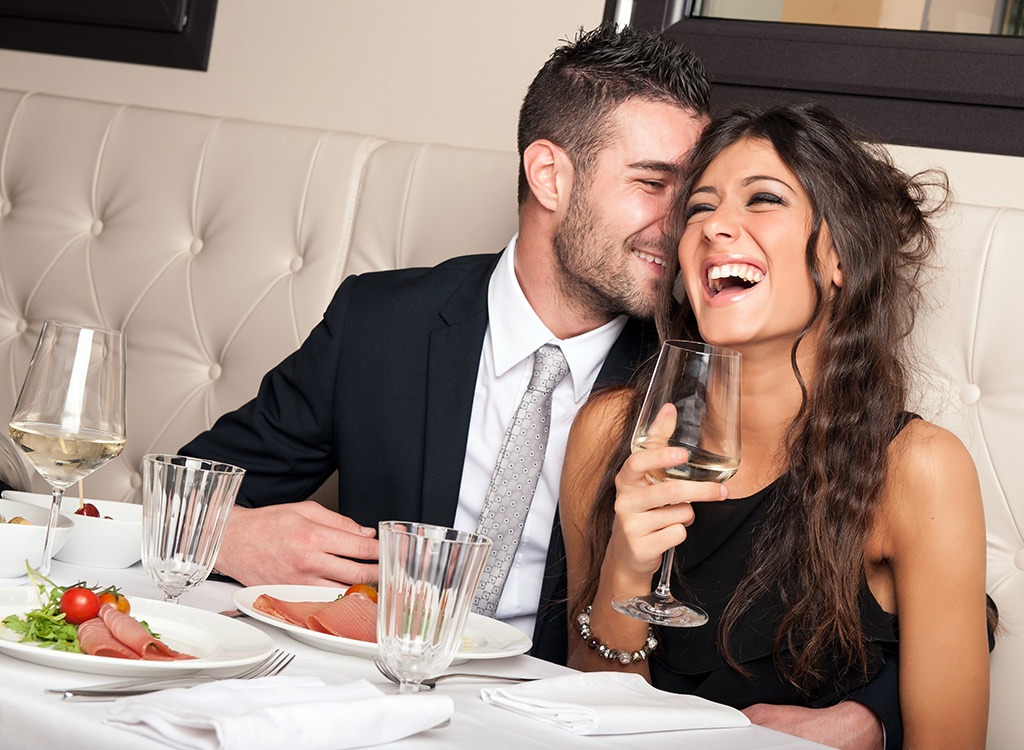
There isn’t hard science to back this up, but dressing up for a dinner out at a restaurant—even a casual one—can change the way you feel about the meal. It makes it seem like more of a formal occasion instead of a regular meal, so you may be more inclined to order something like one of these 23 Healthy Foods Celebs Can’t Get Enough Of.
Drink Water Throughout the Meal
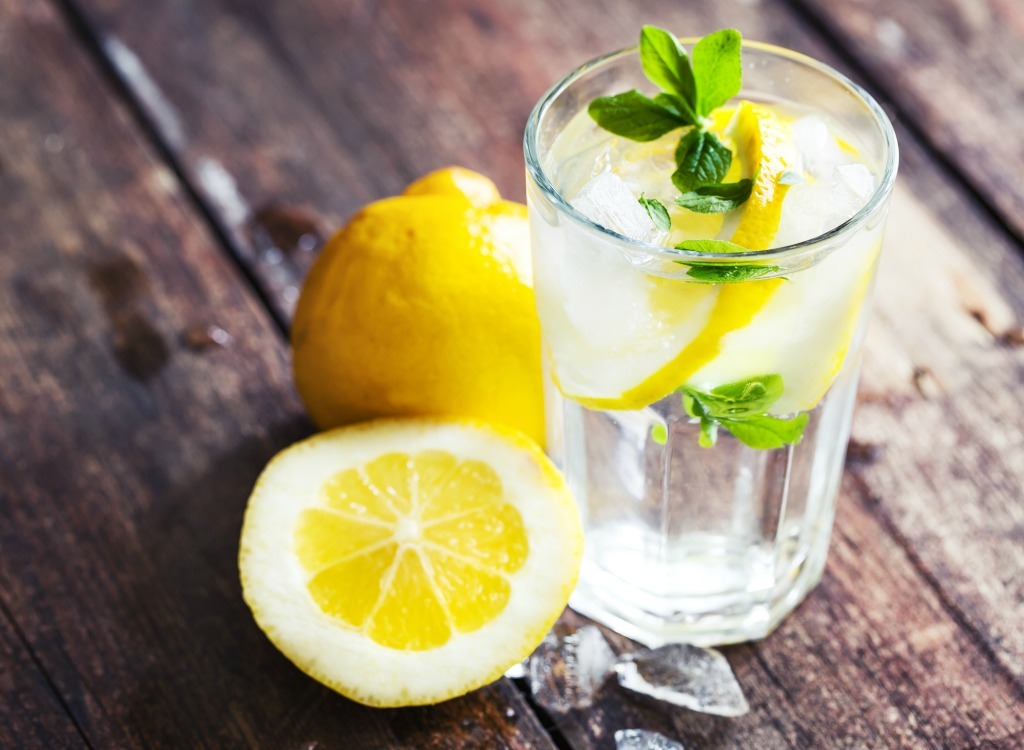
Many times we think we’re hungry when we’re actually just thirsty. Alternate bites with big gulps of water. It’ll force you to slow down as you eat, and you’ll be better able to judge your level of hunger to keep you from overeating.
Eat a Large Meal Earlier in the Day
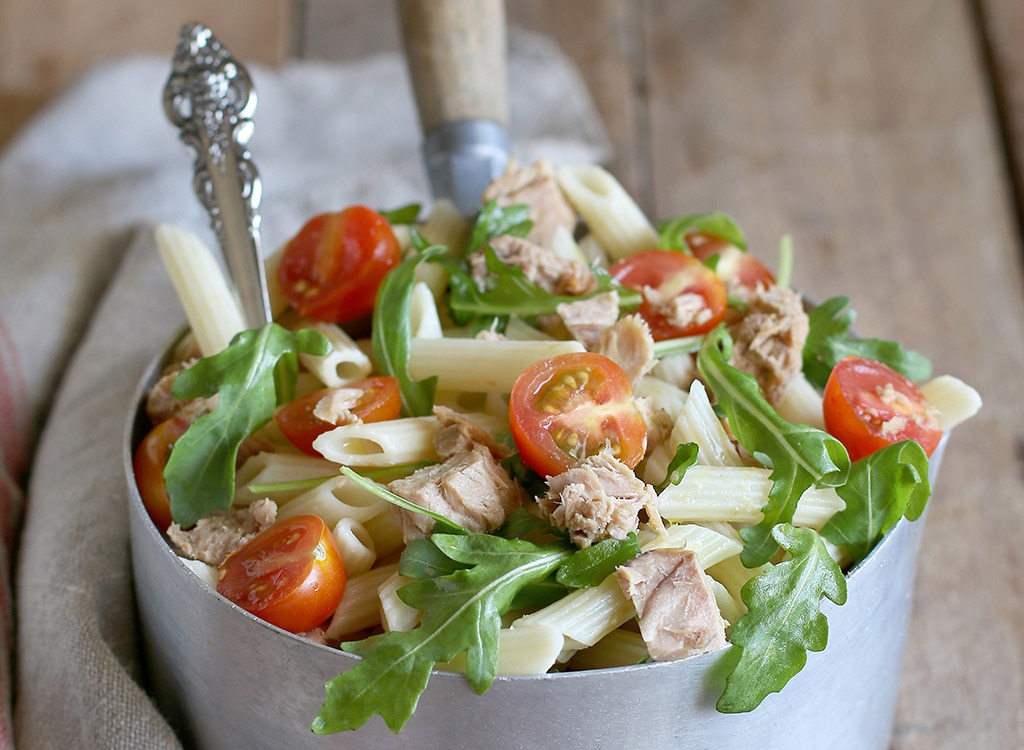
It’s hard to overeat if you’re still full from your last meal. If you’re going out to dinner, eat a large lunch—or at least a decent-sized snack a couple of hours before. That way you’re not famished by the time you get to your table, allowing you to make better decisions when it comes to ordering. Not starving yourself is also one of the ways to keep your metabolism from plummeting. Find out more with these 55 Best-Ever Ways to Boost Your Metabolism!
Plan a Lighter Activity After Dinner

A nice stroll after dinner will not only help you digest, it’ll keep you from ordering something heavy while out. Why? You simply won’t want to feel weighed down and sluggish for a walk. Opting for something healthy will energize you for a light workout, even if that’s only a moonlit walk on the pier.
Pop a Mint When You’re Done
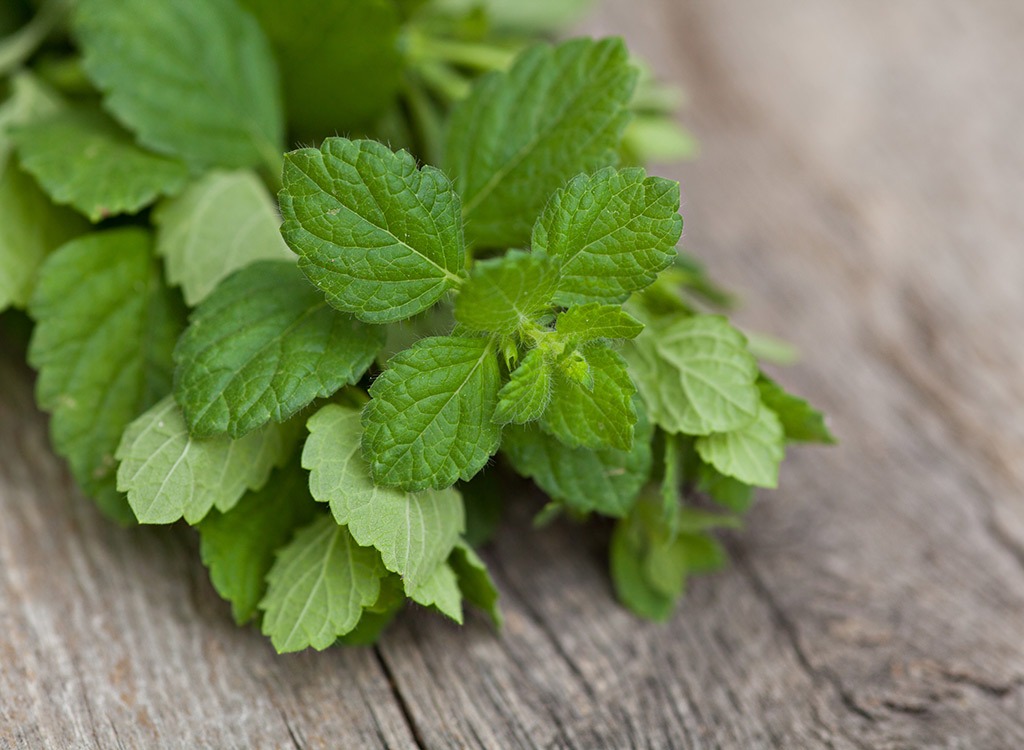
Declare that you’re done eating by popping in a mint after the last bite. Not only is weight loss one of the benefits of mint, but this helps you clear your palate because you won’t want to combine the taste of the mint with another bite of food. Better yet: Cover your meal with a napkin—or douse it in salt—so you’re not tempted to take another nibble.
Give Yourself a Pep Talk

It may seem silly, but giving yourself a pep talk before heading out will motivate you to opt for the healthy choice. Giving yourself a goal makes it real and puts you in the right mindset to approach the meal from a healthy mindset.
Forget About Dessert
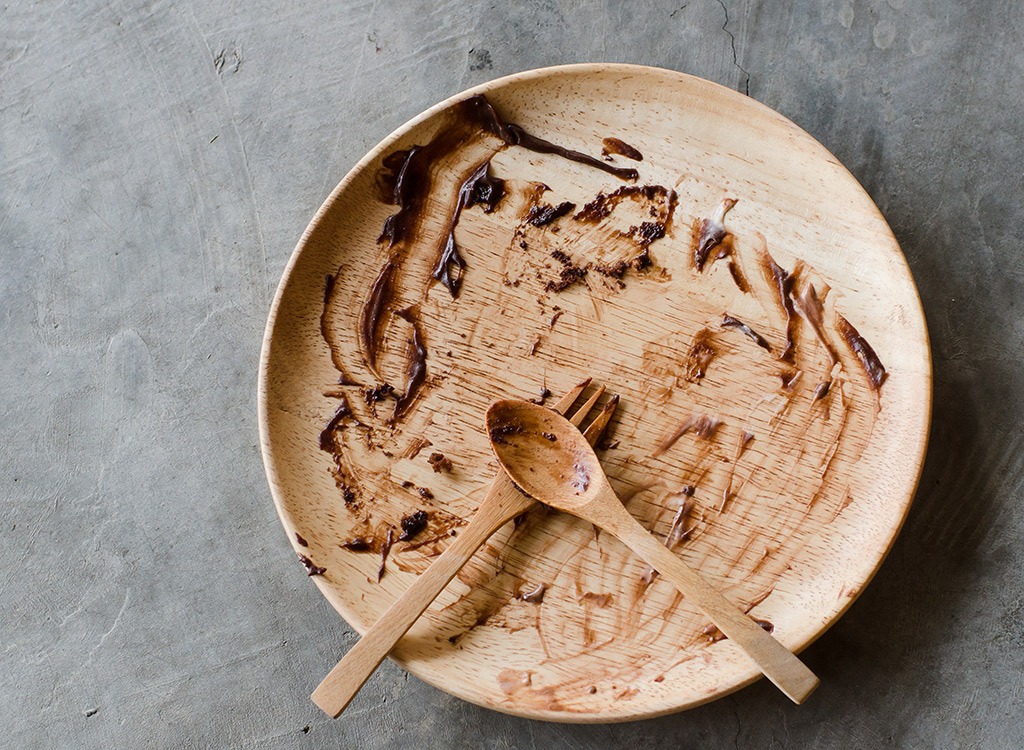
All of those decadent chocolate cakes and pies look so delicious when they’re pushed around on the dessert cart, but even a small piece of rich cake can tack on 400 or more calories onto your dinner. Just say no to dessert at the restaurant. And if you must have some, swing by the frozen yogurt place on the way home for a low-calorie treat that’ll satisfy your sweet tooth.

